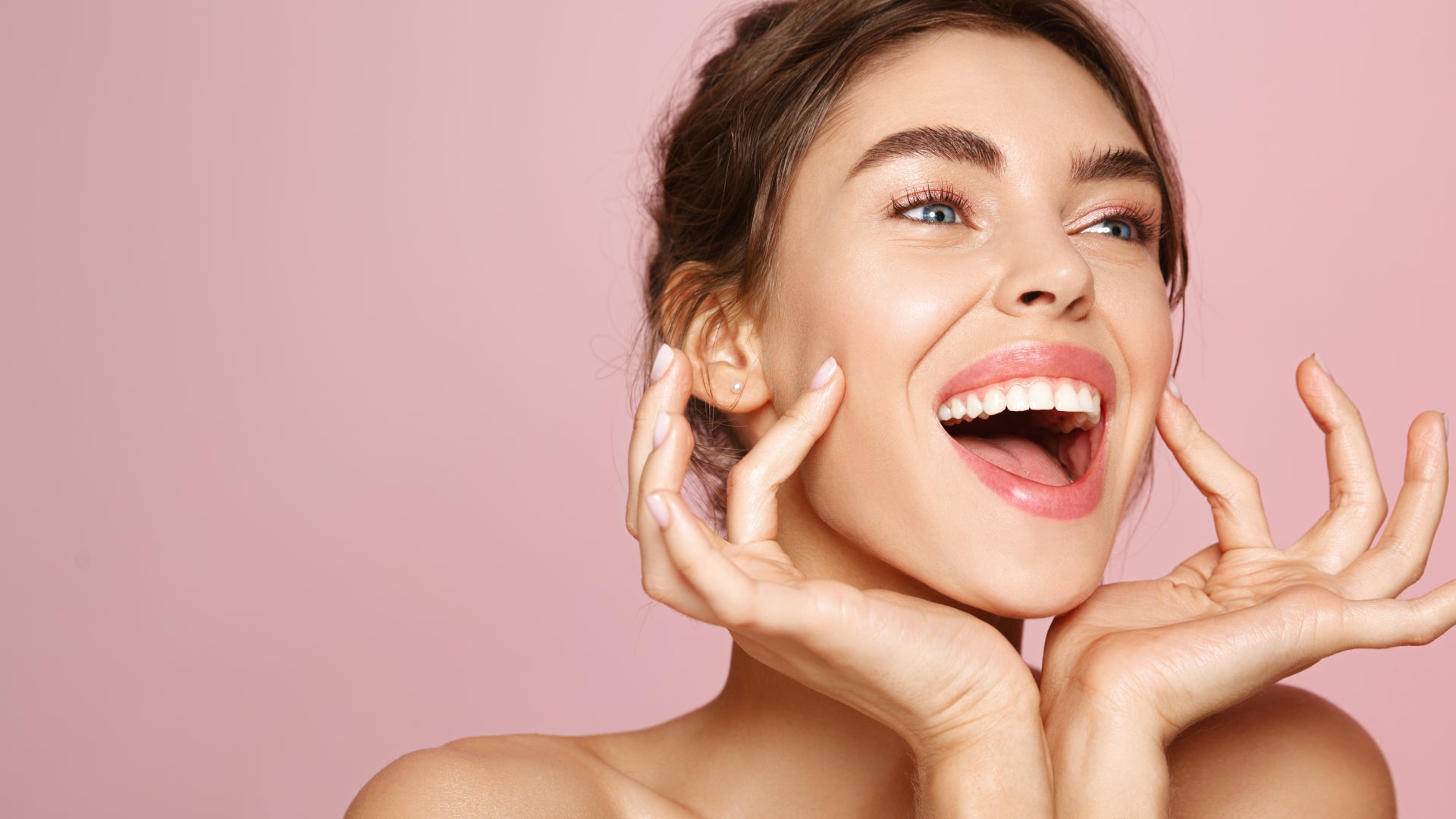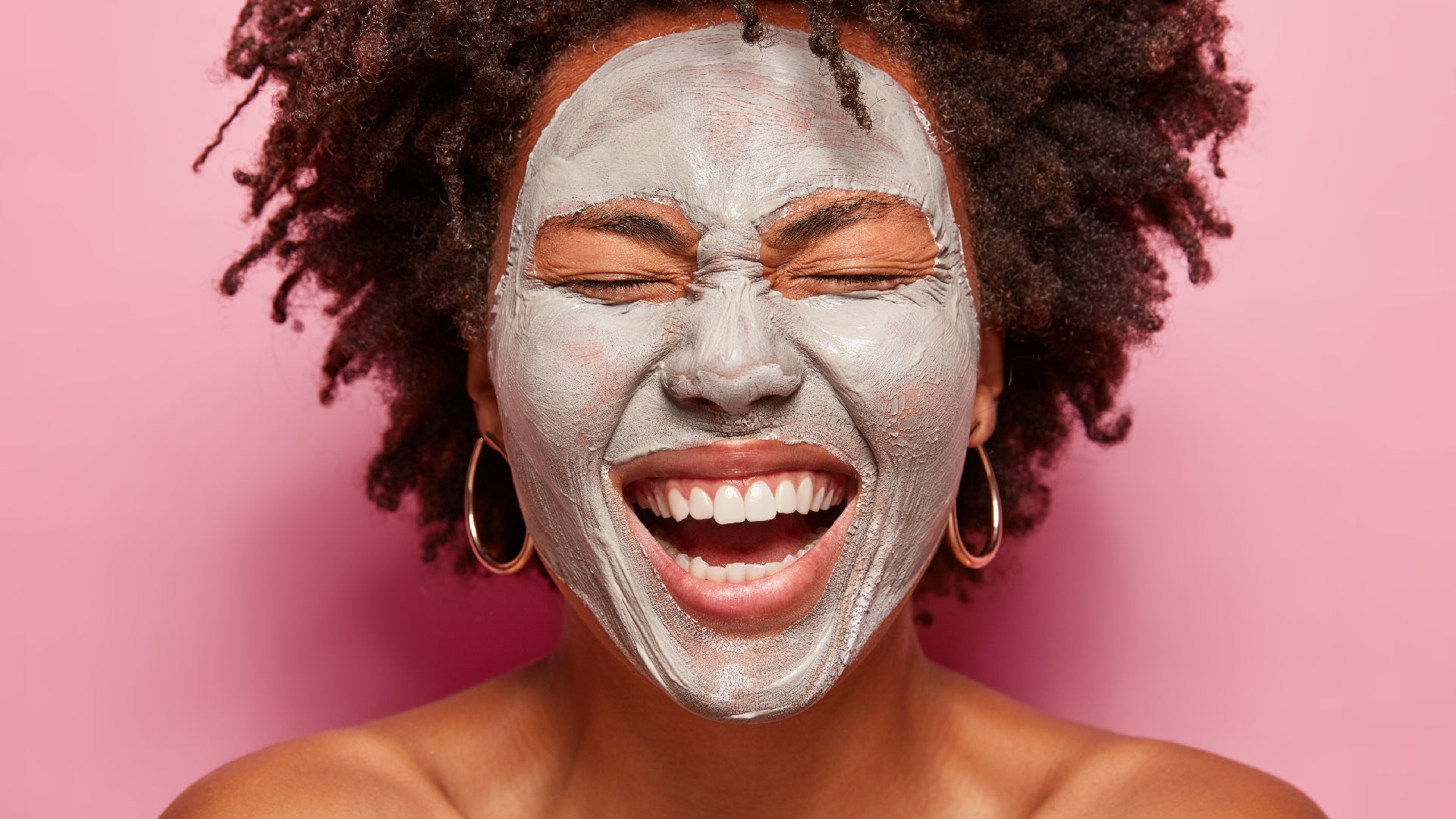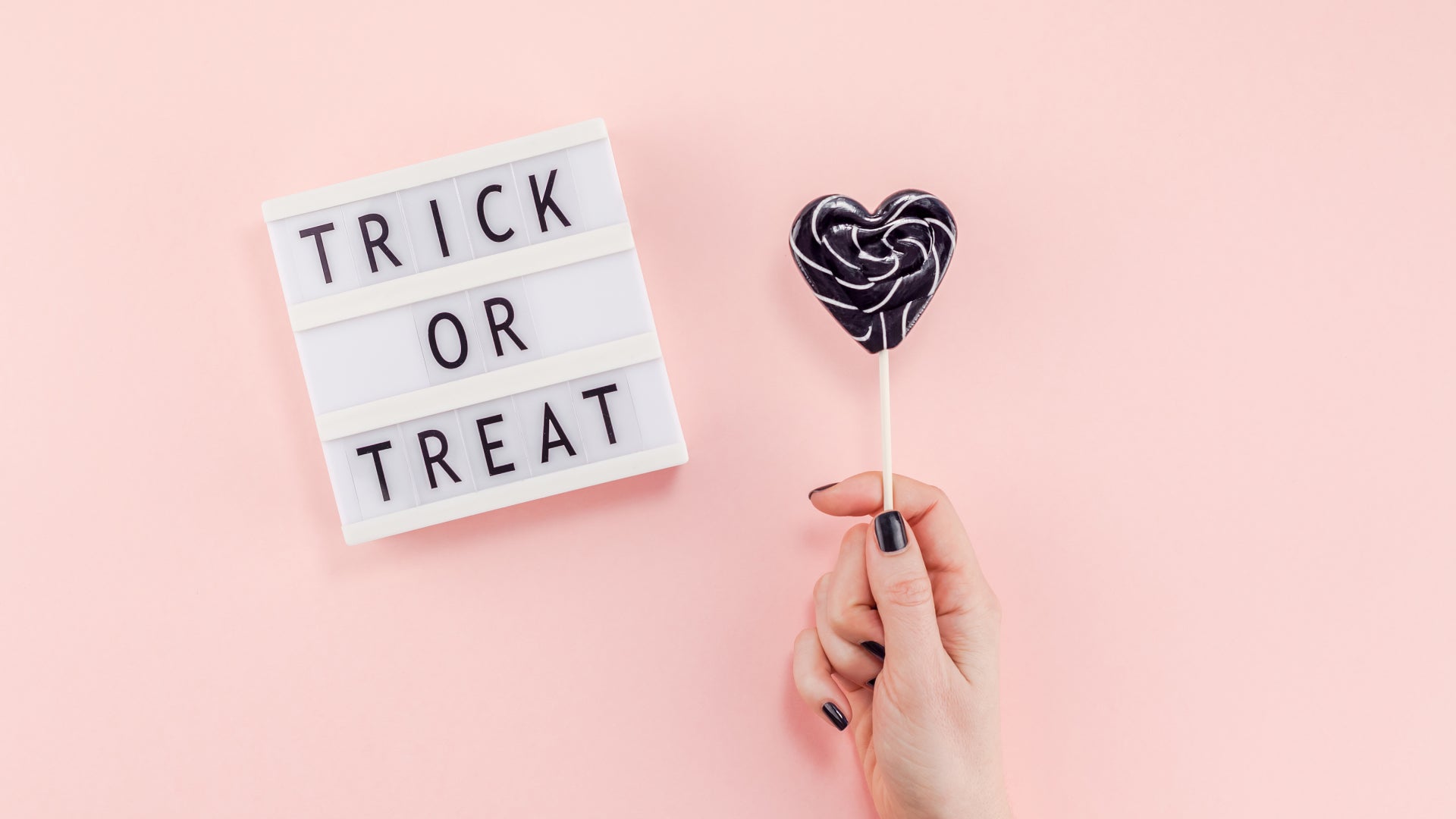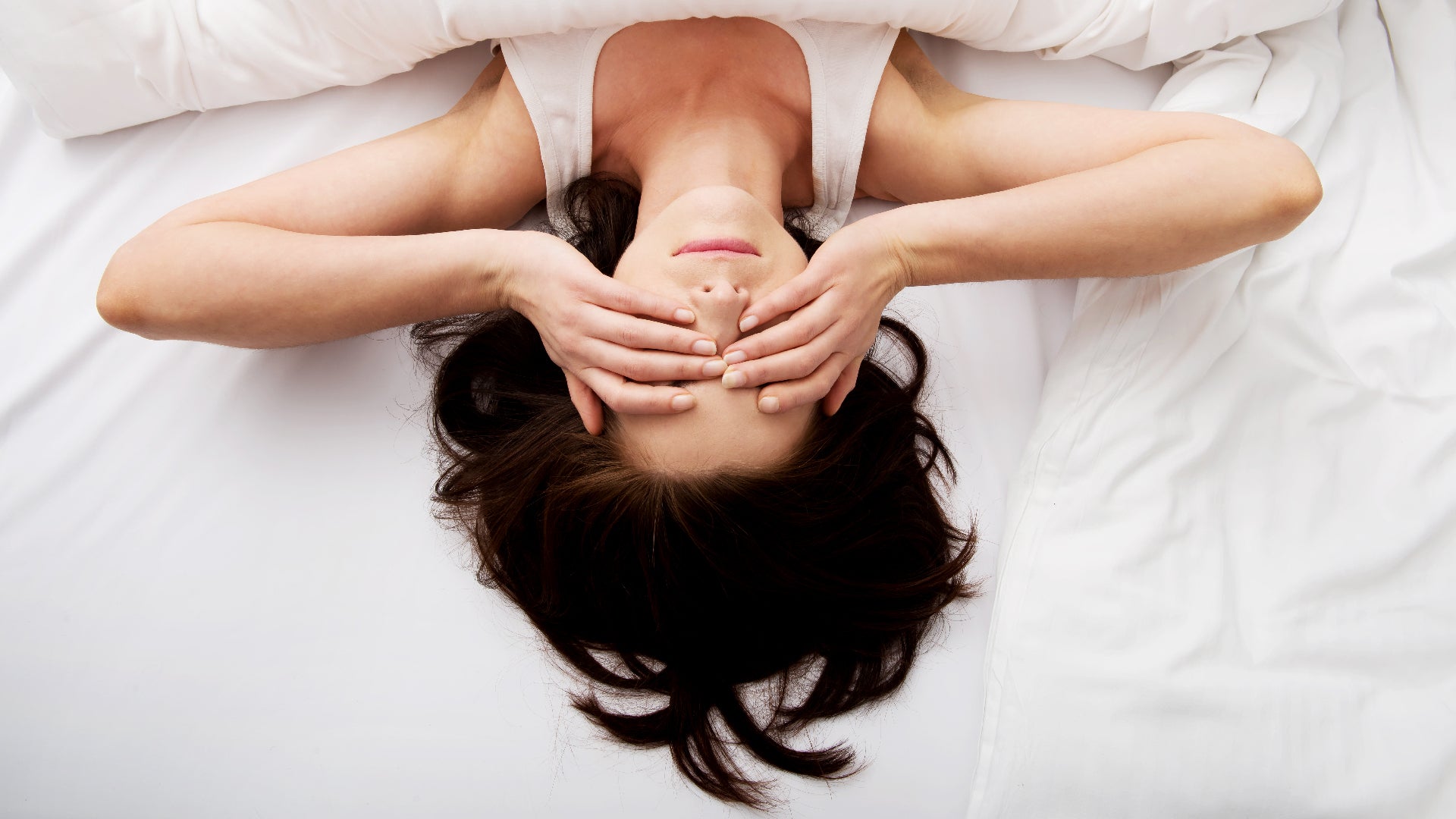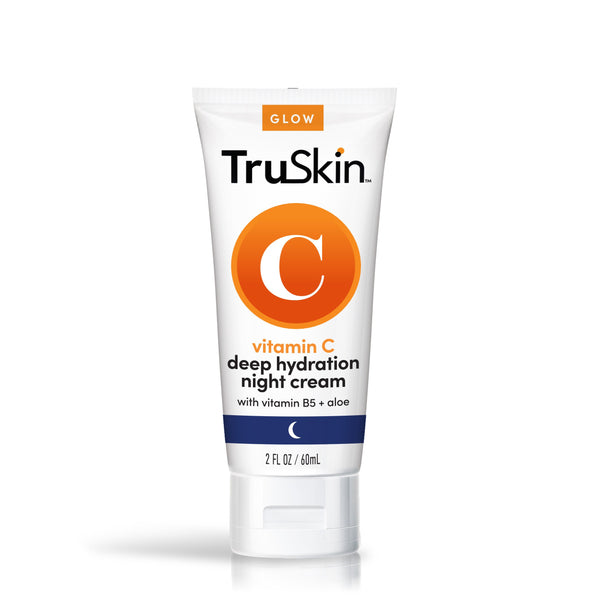
True Radical Honesty From Our Community
What To Do If You Hate Those Fine Lines Around Your Lips
Read MoreAdvice for all of your skin care needs
- all articles
- Acne
- Anti-Aging
- Collagen
- Combination Skin
- Company Announcements
- dry skin
- Exfoliation
- Eye Care
- Facial Redness
- Grooming
- Holidays
- Hyaluronic Acid
- Niacinamide
- Oily Skin
- Retinol
- Sensitive Skin
- Skincare
- Skincare Guide
- Skincare ingredients
- Skincare Routine
- Skincare Tips
- Sun Protection
- Toner
- Vegan Skincare
- Vitamin C
- view all
- Acne
- Anti-Aging
- Collagen
- Combination Skin
- Company Announcements
- dry skin
- Exfoliation
- Eye Care
- Facial Redness
- Grooming
- Holidays
- Hyaluronic Acid
- Niacinamide
- Oily Skin
- Retinol
- Sensitive Skin
- Skincare
- Skincare Guide
- Skincare ingredients
- Skincare Routine
- Skincare Tips
- Sun Protection
- Toner
- Vegan Skincare
- Vitamin C
-
Because now is the best time to plan for party-ready skin. Panicking the night before a big event? Asking for trouble…
We know it’s only November, but Thanksgiving is imminent and December is officially party time. And to be honest, last-minute skincare miracles are all well and good, but when you go into panic mode and overload your skin with lasers, peels, scrubs and potent skincare all at once your skin will repay you not by looking glowing and gorgeous, but with the exact opposite – redness, rawness, inflammation and irritation. Now, we don’t like to be presumptuous, but we don’t reckon any of those are high on your party skin wish list. Are we right or are we right?
So, if your skin is feeling a bit drab right now, a long-term party prep regime is exactly what you need to set your skin up for success. And don’t worry, you don’t need to spend hours preening your face every morning and every night. Just a few extra minutes here and there will make the world of difference. Then when those invites start pouring in, you will be 100 percent ready.
Now, let’s get started, shall we? The countdown is on…
Party Skin Prep Tip #1: Get Your Daily Fix Of Vitamin C
You might have noticed we’re major fans of vitamin C. Our whole brand was born from our Vitamin C Facial Serum and since its launch in 2013 it’s grown to be America’s highest-rated serum with over 50,000 five-star reviews on Amazon (and counting!). Not that we like to brag, but… OK, we do, just a little bit.
One of the most important ingredients for strong, radiant, healthy skin, vitamin C is an absolute must in the run up to the party season. Not on board yet? Then now’s the time to start reaping its countless benefits (which you can read about right here). Do a patch test first (so important!), then apply your serum to dry, clean skin before moisturizing for the best results. This is so all those active ingredients can get straight into your skin, exactly where it’s needed, rather than sitting on top of your moisturizer, fighting to get through.
We recommend applying our Vitamin C Facial Serum every day for the best results. If you’re new to vitamin C, however, and have sensitive skin, start by using it just two or three times a week to ensure your skin has time to get used to it. Then you can build up to daily, maybe even twice daily if your skin can tolerate it.
Party Skin Prep Tip #2: Drink Plenty Of Water
Let’s get one thing straight, there’s very little research to prove that drinking oceans of water directly hydrates your skin. Yes, dehydrated skin lacks water, but there’s no proof that what you drink goes straight to your skin. In fact, your skin is probably the last organ to benefit from water consumption because other organs are far more important and will always get preferential treatment.
This being said, constant dehydration thanks to very little water and way too many sugary, boozy cocktails will do nothing for the state of your skin, highlighting lines and wrinkles and making them look deeper and more pronounced. So, there’s that.
The truth is, water is essential for your overall health, driving your kidneys, brain and literally every single cell and organ to function properly. And when your body is hydrated and on top form, your skin reaps the benefits. So, the answer is simple. Start drinking plenty of water and eating water-rich foods now to get your body in the best possible place before you starting hitting the red wine and egg nog every night. Keep a bottle of water on your desk, another by your bed and don’t dismiss decaffeinated teas and fresh juices – these all go a long way to keeping you hydrated.
But remember, the best to hydrate your skin is through moisturizing every morning and night with a blend of humectants, emollients and/or occlusives. Try our Vitamin C Brightening Moisturizer which covers all those bases nicely.
Party Skin Prep Tip #3: Enjoy Some Regular Facial Pampering
Rather than diving head first into pre-party panic mode, applying a mask the night before and scrubbing your face the day of, introduce your facial treatments weekly – starting now. Depending on the products you choose and the concerns you’re trying to address, nailing down a weekly pampering routine will help gradually balance sebum, hydrate your skin, calm redness and reduce breakouts. Whereas overloading your skin all at once in a bid to transform it overnight is more likely to irritate your skin and make matters worse.
You have been warned.
We suggest a weekly face mask, using clay or charcoal based products to detox your skin and prepare it for the party season. You could also use this time to steam your face (unless you suffer with redness, eczema or rosacea) to help boost circulation, soften your skin and loosen trapped oil and bacteria.
Finally, don’t forget to exfoliate at least once a week to increase cell turnover and get your glow on. You could even do this two or three times a week if your skin isn’t too sensitive. And good news, this is easy with our Ocean Minerals Super Toner which contains one of the best exfoliating ingredients, glycolic acid, and can be spritzed over cleansed skin in just a few seconds. Done.
Party Skin Prep Tip #4: Apply A Retinol Treatment Two Or Three Times A Week
Oh retinol, how we love thee. A literal BFF to your skin, retinol is a topical form of vitamin A and it has so many benefits, we’ve started to lose count. It works by ‘communicating’ with your skin on a deep, cellular level to increase collagen production, stimulate blood flow, repair connective tissue and boost your antioxidant defense system. The result? Healthier, glowy skin with fewer visible lines, wrinkles, breakouts and dark spots.
The one small issue is that retinol’s amazing skin-regenerating powers are also its downfall. Due to its strength, it can be too much for some people’s skin, causing redness, dryness and irritation if not used wisely. But this doesn’t mean you should be put off. Instead, be smart and build it slowly into your regime. First off, do a patch test to test for any adverse reactions. If, after 48 hours, your skin is OK, proceed with caution. Apply a small amount of Retinol Facial Serum to clean, dry skin just once a week until your skin acclimates. Then, after a few weeks, you can build up to two, three, maybe even six or seven times a week depending on your skin's level of toleration. Just remember to listen to your skin and adjust accordingly.
Retinol takes a while to show true results, so be patient because the most visible benefits won’t be visible until around the six week mark. But hey, that’s perfect timing for party o’clock!
Party Skin Prep Tip #5: Don’t Forget The Rest Of Your Body
Your body may be covered up for the next month or so, but come party season, you’re likely to show a bit of cleavage or maybe a shoulder here or there. So, don’t be too slack with your bodycare routine.
Exfoliate two or three times in the shower, using a pH-balanced scrub or a loofah, and take extra care over your delicate décolletage area. Do you suffer with body breakouts? Then try using our detoxifying Charcoal Clarifying Cleanser on problem areas – it's pretty awesome, even if we do say so ourselves!
The skin on your body gets drier and itchier during fall and winter as the climate gets colder, windier and less humid, so avoid showering or bathing in scorching hot water as this strips your skin of lipids making it dry, dehydrated and susceptible to irritation. After cleansing and gently towel-drying your body, make sure to moisturize from head-to-toe while your skin is still damp. This will help lock in vital moisture and keep your skin soft and smooth all winter long.
Include all this into your weekly routine and we guarantee, by the holidays, your skin will be good to glow. No last-minute panic treatments necessary.
How To Shape Up Your Skin For The Holidays
read more -
Halloween’s always a great excuse to scoff candy, but processed sugar can have dire effects on your skin…
Stuffing mealtimes with vitamins, minerals, antioxidants and good fats goes a long way to maintaining glowing, healthy skin. But treating your body like a temple is easier said than done when all the naughty stuff tastes so darn good.
Well, do you know what? A little of the bad stuff is not going to do that much damage in the long run. It’s all about everything in moderation, right? Ha, moderation! That’s all well and good throughout most of the year, but there are certain times when temptation is just too hard to resist. And Halloween is one of them.
From candy corn and Reese’s Peanut Butter Cups to ghoulishly decorated cupcakes and super sweet cocktails, there is literally no getting away from sugar at this time of year. Even when October 31 has passed, Thanksgiving is just around the corner, then the holidays and, well, you might as well right off the entire rest of the year because your willpower stands zero chance against all of that sweet stuff.
But here’s the thing, while a little sugar is fine, overloading your body with tons of processed sugar is hell on your skin and can lead to inflammation, premature aging, even pimples and blackheads. Not down with that? Then here’s everything you need to know about the disastrous effects excess sugar has on your poor complexion. And hopefully a little intel will make you think twice about living by the ‘one for them, one for me’ rule next time those trick or treaters come knocking on your door…
Why Sugar Is Bad News For Your Skin
Studies show that overloading your body with sugar accelerates the accumulation of advanced glycation end products (AGEs) through a process called glycation. Glycation is a reaction that occurs when excessive amounts of sugar become too much for your natural insulin levels to handle. It then attacks your skin cells, latching onto fats and important proteins like collagen and elastin, breaking them down and causing them to stiffen, weaken and performing poorly. The result? Harmful compounds called AGEs that kill your radiant, youthful complexion by causing dryness, exacerbating fine lines, deepening wrinkles and making your skin look kind of ‘meh.’
But that’s not all. Sugar is also an inflammatory, so not only does it play a huge part in the speed in which your skin ages, but it can also be a major trigger for acne, eczema, rosacea and psoriasis flare-ups. Especially if you like to overindulge on the reg.
How To Cut Down On Your Sugar Intake
Did you know, the average American consumes about 17 teaspoons of sugar every day – and who knows how much that spikes over Halloween and the holiday season? So, try to remember, Halloween candy should ideally be for the kids, not you! You probably wouldn’t give the likes of Skittles, M&Ms and Hershey’s Kisses a second look throughout the rest of the year, so just because they’re in the house now, this doesn’t mean you should scoff the lot.
A great tip is not to buy your trick or treat stash until the last minute – preferably the day of Halloween – then temptation won’t get in the way. And if you have leftovers you don’t know what to do with? Give them to a neighbor or take them to work so they’re well out of temptation’s reach.
When it comes to your regular, day-to-day eating habits, avoid adding extra sugar to your food and drinks, and limit packaged, processed foods that contain hidden sugars like corn syrup, fructose, molasses and invert sugar. Make small changes like replacing cookies and ice cream with fresh fruit and unsweetened yogurt, and swap sugary cereals for unsweetened oatmeal or granola. Simple tweaks like these won’t be too painful to stick to, but can make the world of difference to the look and feel of your skin.
5 Ways To Counteract The Negative Effects Of Sugar On Your Skin
Great skincare is also essential if you want to stop sugar from doing a real number on your complexion. Here are our top five ways to beat ‘sugar face.’
1. Load Up On Antioxidants
Pesky AGEs are a real killer on your body’s antioxidant system, deactivating your natural enzymes which work hard to fight against free radicals and all the damage they cause to your skin. To combat premature aging and limit oxidative stress, up your topical antioxidants. Vitamins A, C and E are fabulous antioxidants for your skin, as are niacinamide and hyaluronic acid. Not sure which to choose? Then you can’t go wrong with our fan-favorite, Vitamin C Serum For Face.
2. Up Your Intake Of Alpha-Lipoic Acid
Alpha-lipoic acid (ALA) is another antioxidant that helps protect your skin from free radical damage. It’s also an anti-inflammatory and, according to Diabetes Action, has been shown to help reduce levels of sugar and lipids in the blood by reducing oxidative stress and inflammation. ALA is found in spinach, broccoli, tomatoes, beets, carrots and red meat, but you can also find it in dietary supplements.
3. Get Plenty Of Zzzs
Your body does most of its damage limitation overnight while you’re catching valuable zzzs, so don’t underestimate the power of a good night’s sleep for reducing the aging effects of glycation. Studies show that the sleep hormone, melatonin can reduce damage caused by glycation by up to 50 percent. Sleep also helps curb inflammation and regulates your blood sugar levels to reduce sugar cravings throughout the day. Win win.
4. Use Anti-Inflammatory Skincare
Skincare that reduces redness and inflammation is perfect for anyone with a sweet tooth. And our favorite, anti-inflammatory go-to? MSM. Otherwise known as methylsulfonylmethane, MSM is a sulfur compound that helps increase your body’s natural production of glutathione, a super important antioxidant that works hard to boost collagen, quash environmental damage and fight inflammation. Try Vitamin C Super Serum+ to get your daily fill of MSM.
5. Reduce Your Levels Of Stress
Stress is bad news on so many levels, not least of all its effects on a post sugar high complexion. How so? Because, for one thing it causes spikes in cortisol, which accelerates glycation, increases inflammation, mucks up your collagen and interferes with healing. It can also affect sebum production, making dry skin drier and oily skin even oilier. Try to manage your stress by taking some time for yourself at least once a day. Read a book, go for a walk or take a bath – in fact, anything that helps clear your mind of the daily grind will go a long way to improving your skin – and, of course, your well being.
The Frightening Effects Of Sugar On Your Skin
read more -
From classic cucumber slices to the latest beauty tool sweeping Instagram, it’s time to take action against your unwanted eye baggage.
What is it with puffy eyes? Sure, they might not be your biggest skincare concern – frown lines and hormonal breakouts can fight for that crown – but waking up with bags under your eyes that would put the Kardashians’ weekend luggage to shame is not how we like to start the day.
Like many skin issues, there are a number of reasons you might be blighted by under eye bags. Think genes, lack of sleep, allergies and smoking. But one thing’s for sure, puffy eyes become much more common as you age. How so? Because skin becomes looser thanks to a lack of collagen, while supporting tissues and muscles around your eyes weaken, allowing fat and fluid to accumulate.
OK, so that’s the bad news. But it’s not all doom and bloom because there are countless ways you can quickly and simply improve bags under your eyes...
1. Invest In A Depuffing Eye Treatment
Skincare is a very personal thing and if there’s one product that consistently splits opinion, it’s eye cream. If you’re a bit of a cynic in this department, hear us out for a minute. Sure, regular moisturizer is just about passable for the skin around your eyes. Until it’s not. And the reasons are simple. The skin in this area is way thinner and more fragile than the skin on the rest of your face which makes it extremely susceptible to the visible signs of aging such as lines, wrinkles and sagging. It also has fewer sebaceous glands, so it can quickly feel dry and irritated unless it’s looked after. Then there are more specific eye issues like dark circles and bags – both of which don’t need to be addressed on the rest of your face.
This is why a specific eye treatment – one that’s been carefully created to deal with issues around your eyes – is so important.
When it comes to reducing eye bags, look for ingredients like caffeine, licorice, cucumber, hyaluronic acid and green tea which all help to hydrate the skin and reduce puffiness. Both Hyaluronic Acid Eye Cream and Peptide Eye Gel are also formulated with an ingredient cunningly called eyebright. This is a herbal extract that contains tannin to naturally tighten and refresh the skin while helping to reduce inflammation.
Apply your eye treatment to cleansed skin every morning and night and use your ring fingers to tap a small amount around both eyes. Using your ring fingers rather than your forefingers lessens the amount of pressure you put on your skin which reduces dragging. Meanwhile, the gentle tapping motion helps encourage lymphatic drainage.
2. Chill Out
One of the most effective and cheapest ways to instantly reduce puffiness is to apply something cold over your eyes. Cold temperatures make your blood vessels contract which reduces blood flow and immediately reduces swelling and inflammation. It’s simple science.
Of course, you could place two teaspoons (taken straight out of the refrigerator), a couple of cucumber slices or even some cold, used teabags over each eye for 10 minutes. These will all do the job nicely. But, if you love to embrace beauty tools, you might want to try out some facial ice globes.
Ice globes are a little bit like jade rollers but, as their name suggests, they have balls on the ends and are designed to be kept in your fridge or freezer. They can be used over your entire face to minimize inflammation and puffiness, but they’re particularly awesome for the eye area as their globe-like shape makes them easy to negotiate around the orbital bone. Use them in the morning to help waken up tired, puffy eyes, but be sure not to press too hard as this could drag and damage your skin. A gentle touch is all you need.
3. Be A Better Sleeper
Puffy eyes can be the result of many things, but more often than not poor or not enough sleep are the major culprits. The exact science behind this is kind of hazy but a lack of sleep causes the skin around your eyes to become dry and irritated, so there’s that. It also dilates the blood vessels which increases blood retention, and increases your levels of cortisol which makes your skin retain water.
The answer is simple. Get. More. Sleep. The American Sleep Association recommends between seven and nine hours. Not only that, but try to optimize any shut-eye you do get by sleeping on your back with your head slightly raised. Sleeping on your back helps reduce friction and any consequent inflammation and irritation to your skin from your pillowcase, while keeping your head elevated reduces fluid retention.
4. Embrace In A Little Gua Sha Therapy
You may have seen gua sha crystals popping up on your Insta feeds over the last year or so, but this ancient Chinese therapy has been around for hundreds of years. Using flat, smooth crystals like jade or rose quartz to massage your skin, gua sha is known to help remove a build-up of lymphatic fluids from the face.
To specifically work on puffy eyes, you basically hold your crystal almost flat against cleansed skin, then sweep it under your eye and out to your temple area. Repeat this three or four times, then do the same thing on the other eye and finally repeat the whole process above each eye, working just underneath your brow area. For even better results, always apply eye cream first.
5. Drink More Water, Eat Less Salt
While drinking water doesn’t directly hydrate your skin, if your body is dehydrated it will hold on to all the fluid it can, making your eye bags ten times worse. This means it’s super important to drink plenty of fluids. According to the National Academies of Sciences, Engineering and Medicine, a healthy adult female should consume around 2.7 liters of fluids every day, while men need around 3.7 liters. That may sound like a lot, but some of this will come from your food, with 80 percent being required from drinks like water, milk, juices and herbal teas. Still confused? Then go for eight glasses a day - it's much easier to remember!
One last thing before we go: try to reduce the amount of salt in your diet. Salt is just as dehydrating to your body as a lack of fluids because excess sodium causes it to retain water. This is bad news not only for puffy eyes, but for bloating as well, so decrease your salt intake, especially in the evenings. Fancy a cheeky packet of Cheetos before bed? Nope.
Full-Proof Remedies For Puffy Eyes
read more -
Glowing skin is a sure sign your complexion is happy. But what about when things don’t look or feel as good as you’d like? Chances are your routine could be the very reason your skin is having a mini meltdown…
Happy skin is something everybody strives for. And if only we were all blessed with the type of complexion that permanently behaved itself and looked downright perfect. But life’s not like that – no matter how famous you are or how much money you throw at your skin. Call it Murphy’s law if you like, but as soon as you accept that flawless skin is rarely achieved, the happy we know you (and your skin) will be.
That being said, while you can’t change your genes or suddenly transform your skin type from oily to normal overnight, what you can do is give your skin its best shot at happiness by ensuring your skincare routine is on the right path.
As you know, a great routine consists of gentle cleansing, an antioxidant treatment, regular moisturization and broad-spectrum sun protection. Then there are all the added extras like toner, exfoliation, extra hydration and eye treatments. Reckon you’ve got these down to a tee? Well, we hope that’s true. However, your skin might think otherwise and if it’s showing signs of grief – redness, itching, dry patches, breakouts etc. – chances are, you’re somehow upsetting your skin’s important barrier function. Let’s have a look into that a bit more…
Skin Barrier 101
Your skin has three main layers. The lowest is the hypodermis, followed by the dermis and on the very top, the epidermis. Each of these layers is split into even more layers which are super complex and all play a very important part in the health of your skin and body.
Right at the top of your epidermis is the uppermost layer, the stratum corneum, otherwise known as your skin's barrier. The stratum corneum is kind of like a brick wall of around 20 layers of cells, held together by essential lipids such as ceramides, cholesterol and fatty acids. This brick wall is your body’s first line of defense against the outside world and works hard to protect you from the slings and arrows of everyday life like pollution, toxins and chemicals. It also stops TEWL (transepidermal water loss) to retain the right balance of moisture in your skin and help keep it soft, supple and healthy.
Sounds great, doesn’t it? Yes, in theory. it is. However, your skin’s barrier naturally weakens with age, a cruddy skincare routine and poor lifestyle choices. And if your barrier is not functioning to the best of its abilities, moisture can escape from the surface of your skin far too easily – bad news for things like lines, wrinkles, dehydration, sensitivities and irritation. It also means your skin becomes more sensitive to things like active skincare ingredients and other environmental irritants.
So, how can you ensure your skincare is barrier-friendly and your complexion is in a much happier place?
5 Simple Ways To Avoid Upsetting Your Skin
1. Always Perform A Skincare Patch Test
One of the most vital, and often overlooked ways to ensure everything you put on your skin is a-okay is to patch test it first. We can see you rolling your eyes, but hold on there because your skin is a very delicate organ and there’s always the possibility of it not liking a certain ingredient in your skincare.
The worrying truth is that other than color additives, cosmetic ingredients don’t have to be tested or approved by the FDA to be allowed into a beauty product. Scary huh? Of course, most reputable manufacturers (us included) ensure that everything is safe when used correctly, but still, that’s a worrying thought…
Your only option, therefore, is to test a product on a discreet area of skin and leave it for at least 48 hours before using it properly for the first time. Not sure how to patch test? We can help with that right here.
2. Go Slow With Your Active Ingredients
Piling on vitamin C, retinol, glycolic acid and anything else you can put your hands on is a recipe for skin barrier disaster. So, go steady. Check all of your skincare labels and write down any active ingredients you come across. Actives include any ingredient that has been proven to change the skin in some way – whether it be to improve acne, discolorations, dryness, fine lines or wrinkles. Think AHAs, BHAs, antioxidants, retinol, urea, hyaluronic acid and so on.
Once you’ve made your list, have a look at it and make a note of any major repetitions and how your skin is feeling right now. If your skin feels red and dry, for example, and you notice every single product in your regime contains some kind of exfoliating acid, think about ditching one or two of these products for more calming, moisturizing options.
Similarly, you shouldn't need to apply more than one serum, so if you're doubling up, well, stop that. All of our serums have been formulated with at least one active ingredient, but they’ve been carefully blended to cause as little irritation to your skin barrier as possible. Niacinamide Facial Serum, for example, contains vitamin E and hyaluronic acid as well as strengthening niacinamide, so it’s the perfect choice for a healthy barrier function.
3. Don’t Double Cleanse
Double cleansing is fine if you wear tons of makeup or have oily skin that rarely feels clean after a single cleanse, but for most of you, we think it’s kind of pointless. Worse than that, it can strip away all of your essential oils and fatty acids which disrupts your barrier function and can cause long-term dryness, dehydration and irritation.
Instead, gently cleanse your skin morning and night with Vitamin C Brightening Cleanser to wash away impurities without sucking your skin dry. Massage it gently over moist skin and rinse with lukewarm, but never hot water.
4. Be Mindful Of How Much You Exfoliate
Hands down, one of the most common skincare sins is to over exfoliate. And this is a big mistake for your skin’s moisture barrier. Sure, exfoliation is great for boosting cell turnover and ensuring a radiant glow, but too much strips your protective barrier and is a one-way ticket to red, inflamed, excessively dry skin. Which is probably not what you were hoping for when you embarked on your kick-ass exfoliation regime, right?
If your skin is particularly unhappy right now, pare back on any kind of exfoliation – and yes, that means everything from scrubs and cleansing brushes to glycolic and lactic acid treatments. Stay away from these for at least 10 days then slowly introduce one form of exfoliation into your routine just once or twice a week. Cleansing using a soft facecloth is a great way to reintroduce light exfoliation into your life. We’re also big fans of glycolic acid so try our Ocean Minerals Super Toner which contains peptides and MSM to strengthen and rebuild your skin.
5. Moisturize Every Morning & Night
Never, we repeat, NEVER forget to moisturize your skin twice a day. Hydration is the absolute key for rebuilding and strengthening your skin’s barrier, so, even if your skin is oily, you need to apply a hydrating moisturizer after cleansing, toning and treating your skin to lock in moisture and stop water from evaporating from the surface.
When choosing a great moisturizer to support your barrier function it’s all about the right ingredients, and a truly balanced and effective moisturizer has to include at least two of three types of ingredient. 1. A humectant. 2. An emollient. And 3. An occlusive.
Humectants such as glycerin, aloe and hyaluronic acid draw water into the skin like a sponge; emollients like jojoba oil and squalane soften the skin and smooth over cracks, while occlusives like shea and cocoa butters form a physical barrier on the surface of your skin. Our awesome trio of moisturizers (Vitamin C Brightening Moisturizer, Deep Hydration Night Cream and Retinol Moisturizer) all contain a fabulous combination of humectants, emollients and occlusives. Win. Win. Win.
Finally, Don’t Expect Your Skin To Cheer Up Overnight
Healing your skin barrier isn’t something that can be achieved with the click of your fingers. Far from it. It’ll more likely take somewhere between two and four weeks to truly see stronger, happier skin.
Patience is a virtue, people.
Is Your Skin In Its Happy Place?
read more -
Put aside your serums, essences, oils and elixirs for a hot minute because it’s time to focus on the basics. Why? Because they might be basic but they’re actually the most important part of a kick-ass skincare routine…
The basics of a good skincare routine are simple: your skin needs to be cleansed regularly, moisturized effectively and always protected from the damaging rays of the sun. End of. Yes, eye treatments are awesome for targeted puffiness, crow’s feet, dark circles and everything else that causes you grief in the area around your eyes. And sure, antioxidant serums are the bomb for all number of issues like dryness, dullness, wrinkles and dark spots. But if you’re not down with a fabulous cleansing, moisturizing and sun protecting routine, you can forget the rest.
Feel like you’re overlooking what are undoubtedly the most important elements of your skincare regime? Then it’s probably time to get back to basics. Here’s how…
How To Nail The Basic Steps Of A Top Quality Skincare Routine
The first thing to remember with any regime is that no matter your skin type, condition, concerns or budget, your skin is super fragile and needs to be treated with the utmost of respect. This means avoiding tons of parabens, sulfates, phthalates and the like, while simultaneously taking it easy when it comes to potent, active ingredients like retinol and vitamin C. Sure, active ingredients are awesome for your skin – but only in small doses and only if they don’t cause your skin to freak out. Try to remember that.
Now, let’s get down to the specifics of a classic but effective cleansing, moisturizing and sun protecting routine.
1. Cleansing
People often dismiss cleansing as being unimportant, believing you can just wash your face with soap for a few seconds and job done. Not so. We believe cleansing is one of the most essential parts of your routine. Not only does it remove all the impurities from the surface of your skin including excess oils, dead skin cells, sweat, dirt, makeup and pollution, but creating a clean canvas helps set the rest of your routine up to succeed. If you leave all that grime sitting on your skin it will build up, block your pores and cause irritation, breakouts and premature aging. It will also create a barrier which the rest of your products will find almost impossible to penetrate. And what’s the point in investing in fantastic serums and moisturizers if they can’t do their jobs properly? No point. No point at all.
To nail your cleansing routine, do it every morning and every night (nope, facial wipes don’t count) and choose kind formulations that aren’t chock full of stripping alcohols or nasty sulfates like SLS and SLES. Gentle balancing cleansers are great for oily skin but avoid anything that’s too drying as this will overstimulate your sebaceous glands and exacerbate oiliness. Our amazing Charcoal face wash is a sweet choice for oily, combination or acne-prone skin. For the rest of you, try our awesome Vitamin C Brightening Cleanser.
One of our biggest pieces of advice for pro-style cleansing is not to rush. If you spend just a couple of minutes gently massaging your skin as you cleanse you will instantly boost blood flow and lymphatic drainage which brings oxygen to the skin and helps take toxins away. You don’t need to get too handsy, either, just be gentle and use the pads of your fingers to work your cleanser in circular motions all over.
After you’ve massaged your face and neck for two minutes, rinse well – using lukewarm (never hot) water – then pat your skin dry with a fresh, clean towel. Hot water is a major no-no as it strips your skin. And using dirty communal towels the whole family dries their hands with? Not cool for your beautifully cleansed face.
2. Moisturizing
Moisturizing your skin has to be one of the best parts of your routine. Are we right or are we right? There’s just something about smoothing cream or lotion on your skin that feels so darn good. Moisturizing is also vital for taking care of your skin’s barrier function and keeping your skin soft, supple and healthy. So, there’s that.
The best time to moisturize, if you’re not toning or applying treatment serums, is straight after cleansing while your skin is still slightly damp. This helps lock moisture into your skin for extra hydration. Neat huh? Make sure your hands are super clean – they should be because you’ve just cleansed – then apply a quarter-sized amount over your face and neck, using the palms of your hands to smooth it all over. Put your hands in a prayer position, either side of your nose, then press your hands flat onto your skin and work them up and out towards your hairline. Repeat this two or three times, then repeat over your forehead, finishing at your jawline and finally your neck. This should help you create an even layer all over.
If your skin still feels tight, dry or dehydrated, don’t go ahead and pile on more moisturizer. Instead, your skin is trying to tell you that you either need a heavier formulation or that you might benefit from a treatment serum before you moisturize. The same principle applies if your moisturizer feels too rich or heavy. Don’t scrimp on how much you apply, simply switch it up with a lighter gel or lotion formulation. Vitamin C Brightening Moisturizer and Vitamin C Deep Hydration Night Cream have both been formulated to suit most skin types, but still, it’s all about listening to your skin, people.
3. Protecting Your Skin From The Sun
The last step in any skincare routine, whether you stick with the basics or go full-on K Beauty on us, is to apply sunscreen. The fact is simple: the sun is the number one cause of skin aging. According to the Skin Cancer Foundation people who apply sunscreen with an SPF of 15 or more every day show 24 percent less skin aging than those who don’t. Now, we don’t know about you, but we’ll take 24 percent less aging in a heartbeat, thanks very much.
Our advice when it comes to applying sunscreen is simple. Smooth it generously over any area of your skin that's not covered by clothing, and apply it every day of the year. Cloudy days? Yes. Snowy days? Even more so. UV radiation is present all year round. End of discussion.
Around half a teaspoon is an ideal amount to generously cover your face and neck, according to the American Academy of Dermatology (AAD). And if you’re spending all day outside? Then you'll need to reapply it every two hours and immediately after swimming or sweating. Also, when it comes to specific ingredients, the FDA recognizes just two safe and effective ones for protecting your skin against damaging UV radiation: zinc oxide and titanium dioxide. Make sure any formulation you choose contains one or both of these.
Simple? Yes. Effective? 100 percent.
Your Essential, Back-To-Basics Skincare Guide
read more -
Because if your routine is all over the place, your skin could easily end up in the exact same boat.
Do you love your skin? And we’re not talking about your so-called imperfections because you’d be kind of weird if you truly loved your dark spots, lines and pimples. No, what we’re actually talking about is your skin as a whole. That massive and super important organ which accounts for around 15 percent of your entire body weight, covers an average of 20 square feet and is your body’s first line of defense against the world and everything it throws at you.
Understanding your skin and coming to terms with the fact that it may not be what it used to be is the first step to loving your complexion. And the second? Working diligently every single day to help protect, treat and maintain what you now have.
We believe that looking after your skin with a consistent regime is the single most important way to help balance your skin, prevent acne, treat dryness, reduce the visible effects of aging and so on and so forth. By sticking to a routine that includes gentle cleansing, targeted treatments, smart moisturizing and, of course, that all-important sun protection, you can rest assured you’re doing everything you can to manage the effects of time. And by doing this you automatically maximize your skin’s full potential. Which is all you can ask for, right?
So, how do you know what’s the correct routine for you? Well, first you need to understand your skin type.
What’s Your Skin Type?
Sure, you may have days when your skin feels oilier than others, but do you honestly have oily skin? And yes, your skin may feel a little irritated sometimes (don’t we all!), but is it genuinely sensitive?
To work out your true skin type, wash your face with a mild cleanser, then pat it dry and leave it completely bare for an hour or so. After this time, study it in the mirror and feel it with clean hands. If it feels tight and a little itchy it’s dry; if it looks shiny and feels greasy – especially around your t-zone – it’s oily; if it’s a bit of both it’s combination and if it looks the same as it did an hour ago – ie: peachy keen – then we hate you (jokes) because you’ve been blessed with the much-coveted normal skin.
Once you know your skin inside out, you can then tailor a smart routine that caters for both your skin type and your current concerns. Trust us, this knowledge is worth its weight in gold.
How To Build An Awesome Skincare Routine
Here’s how to nail the five most important steps…
1. Cleansing
No matter your skin type, gentle is always the way to go when it comes to cleansing your skin. Choose products that are free of irritating ingredients like sulfates, phthalates, silicones and bad alcohols, and make sure you cleanse every morning and night – without fail. Your skin is subject to all manner of toxins, chemicals and pollution throughout the day, not to mention the natural oils and sweat that blend with your makeup and build up on the surface of your skin. All this simply has to go before turning in for the night if you want to keep your skin clean, clear and healthy.
When you cleanse, use lukewarm water only as hot water could cause redness and irritation. Massage your face and neck (don’t forget your neck, people) using the pads of your fingers to boost blood flow and lymphatic drainage, then rinse thoroughly and pat dry with a clean towel. That communal hand towel the whole family uses to dry their hands? Unacceptable for the delicate skin on your face.
2. Toning
After cleansing, don’t forget to spritz your skin with toner. Long gone are the days when toners stripped your skin of every last drop of oil, claiming to be the cat’s whiskers for getting rid of acne spots but often making matters worse. Nowadays, toners are formulated to flood your skin with hydration, antioxidants, minerals, peptides, exfoliating acids, the works.
Even the most sensitive of skin can benefit from toner. Take our Rose Water Refreshing Facial Toner, for example. This 100 percent pure and natural Moroccan rose water gently balances, hydrates, calms and heals the skin, making it ideal for all skin types, but particularly great for irritated skin.
Simply mist it all over your skin immediately after cleansing. So easy, but so effective.
3. Treating
Now’s the time to apply your eye treatment and serum. Serum should come first, straight after toning, and remember, less is more. Apply just one or two drops to your fingers, then smooth or press it all over your face and neck. Take care not to massage it in too much as serums are formulated to penetrate your skin without too much effort on your behalf.
Think about what niggles you about your complexion and choose your serum accordingly. Are you concerned with dehydration? Then something with hyaluronic acid or glycerin should be your first port of call. Perhaps you want to target the visible signs of aging. Then you can’t go wrong with retinol. Or maybe your skin is looking dull and you want to up your radiance game. Say hello to vitamin C. We have a whole team of serums just waiting to help deal with your skin woes. You’re welcome.
After applying your serum, allow it to settle for a few minutes while applying an eye cream or gel to moisturize this notoriously dry area and target issues like dark circles or puffiness. The skin around your eyes is around 10 times thinner than the rest of your face, so avoid applying your regular moisturizer here – it could overload the skin and cause irritation or bags.
Again, a tiny amount of eye treatment is plenty, so dispense just one pump between the pads of your ring fingers, then dab it gently all around your eyes, taking care not to apply too much pressure or drag the skin. Big no-no, right there.
4. Moisturizing
Give your serum and eye treatment another minute to settle before applying the next stage in your awesome routine: moisturizer. This will help avoid pilling – those annoying balls of product that build up on the surface of your skin.
Your moisturizer should be formulated with a blend of humectants (to hydrate) plus emollients and/or occlusives (to smooth and seal in moisture) and should be targeted to your specific skin type. Look out for oil-free, gel formulations if your skin is super oily, and richer butters or balms if you’re extremely dry.
Lotions and creams are ideal for normal or combination skin types, but if they’ve been formulated cleverly they can be great all-rounders for all. Our Vitamin C Brightening Moisturizer, for example, is an awesome choice for hydrating, moisturizing, brightening and protecting most skin types. Same goes for Vitamin C Deep Hydration Night Cream.
Apply a dime-sized amount all over your face and neck, using the palms of your hands. Start either side of your nose and sweep it out towards the hairline. Repeat this a few times, then work in the same motions over your forehead, chin, jawline and neck.

5. Protecting
Your nighttime regime is now complete. Not so for the morning because there’s one vital component missing here: sun protection. Of course, great serums and moisturizers will be packed with antioxidants to help protect your skin from sun-induced free radical damage, but you must further protect it with a broad-spectrum sunscreen every day of the year: rain or shine.
Unlike the rest of your regime, sun protection is not something you can afford to scrimp on. The Skin Cancer Foundation recommends a good nickel-sized dollop for your face, so don't be tight and apply it evenly and generously.
Now, Stick With It, People
You know your skin type, you’ve pinned down an awesome routine, now all that’s left to do is to stick with it. Of course, the odd lazy evening when you’re too tired to spend 10 minutes on your skin is OK, but try to keep up with a consistent routine as much as you can. And no matter how tired you are, at least cleanse and moisturize your precious skin before bed.
Your skin will thank you for it, we promise.
Why A Solid Routine Is The Key To Your Best Skin Ever
read more



